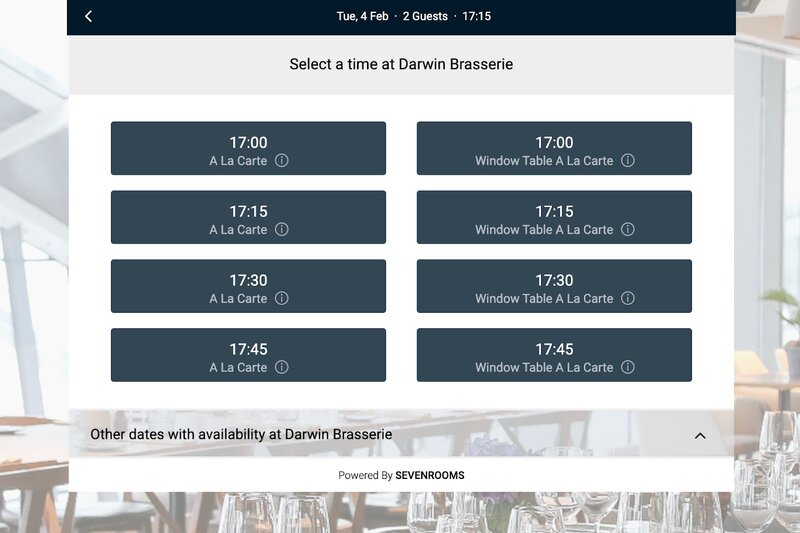The 2025 U.S. Restaurant Trends That Surprised Us
5 min read
Apr 15, 2025

5 min read
Apr 15, 2025

The restaurant industry never sits still—just when you think you’ve figured out what diners want, the game changes. And in 2025, one thing is clear: guests expect more than just great food. They want hyper-personalized dining experiences that make them feel valued, connected and—let’s be real—impressed enough to post about.
Our 2025 U.S. Restaurant Trends & Diner Expectations Report uncovered some surprising shifts.
Americans are more selective about where they spend, but they’re willing to splurge—if the experience is worth it. They’re also changing how they interact with brands and what it takes to keep them coming back.
The good news? They’re telling us exactly what they want. The challenge? Delivering it at scale.
Enter: SuperHuman Hospitality™—a concept where technology and data empower restaurateurs to create exceptional, personalized experiences without sacrificing efficiency.
Here are the most important restaurant industry trends shaping 2025 and tips for using tech, AI and automation to stay ahead.
Americans are raising the bar for personalization, but nearly 80% of restaurants are still guessing at what guests actually want. Operators cite their biggest challenges as:
Meanwhile, guests are crystal clear on what they expect:
Yet, there’s a gap. Nearly half (47%) of consumers want birthday and anniversary perks, but 39% of operators don’t offer them. Similarly, fewer than half of restaurants provide the custom tasting menus (45%) or curated platters (40%) that diners crave.
Special dining experiences also help with retention. 74% of consumers plan to or have already returned to a restaurant after a unique experience.
Darwin Brasserie gave diners the option to upgrade to window seats during the reservation process and increased digital sales by 626% in just two months.

Your guests don’t just want your food—they want a piece of your brand. 87% of consumers are interested in buying restaurant-branded products, from pantry staples to online classes.
Merch isn’t just a revenue play; it’s a built-in word-of-mouth marketing channel that turns diners into ambassadors. This intentional blurring of the lines between dining and shopping is driven by a desire for convenience and a deeper relationship with brands they trust.
Nail this, and you’ve opened up another revenue stream beyond filling tables.

Forget inbox overload, texts are the new table talk. Modern diners have a growing appetite for dining deals and VIP invites, and they want it in a text thread.
48% of consumers prefer to connect with restaurants via text, and SevenRooms’ clients using SMS marketing have generated up to $70K in revenue from a single campaign.
"We never want to send email and text on the same day...we do an email campaign and then the text message campaign goes out a few days later. Where we see the biggest spike [with text marketing] is when we roll out the urgency messaging. It's the FOMO. That's how we get the bulk of our covers." - Henry Kaminski, Founder of Brand to Table and former CMO at Fabio Viviani Hospitality
Worried that requiring a deposit or credit card hold will scare off diners? The data says otherwise—less than a quarter of consumers say it deters them from booking.
Guests are already used to pre-payment models in travel, events and other hospitality experiences. They just want clear communication upfront. When framed as a way to secure their reservation and prevent no-shows, deposits become a standard (and expected) part of the process.
Diners are already adapting to AI-powered hospitality—it’s the restaurants that are lagging behind.
74% of consumers are comfortable with AI in the reservation process, but only 29% of operators use AI for reservations.
The opportunity with artificial intelligence is massive: restaurant operators that adopt AI for guest interactions, reservations and reputation management are seeing faster response times, higher engagement and better guest experiences.
Adopting AI tools like chatbots, voice and phone AI systems and AI-driven messaging can revolutionize your reservation process. AI can manage routine tasks such as confirming, modifying or even rescheduling reservations, allowing you to provide fast, seamless service without overburdening your team. These systems can instantly respond to guest requests, whether they’re reaching out through web chat, text, or even the phone—boosting engagement and cutting wait times.
This year’s trends aren’t just about adapting to change—they’re about embracing the tools that make high-touch hospitality scalable. Today’s diners demand personalization, convenience and experiences worth remembering. The restaurants that leverage tech, AI and automation to deliver high-impact, low-effort guest interactions will be the ones that thrive in 2025 and beyond.
Download the full 2025 U.S. Restaurant Industry Trends Report for even more restaurant business insights and takeaways. Or if you’re ready to make your hospitality SuperHuman, book a SevenRooms demo today.